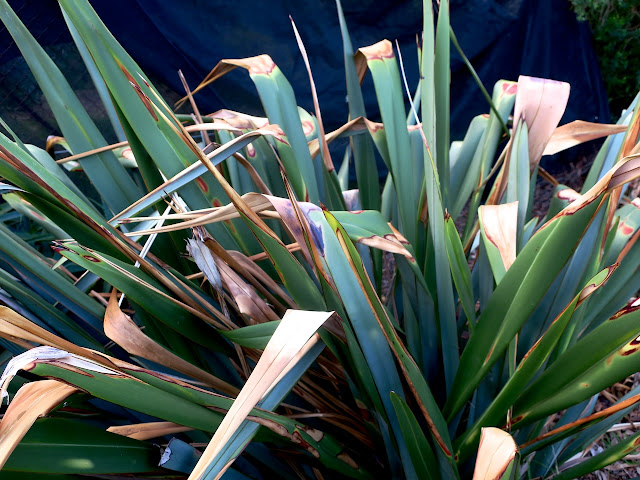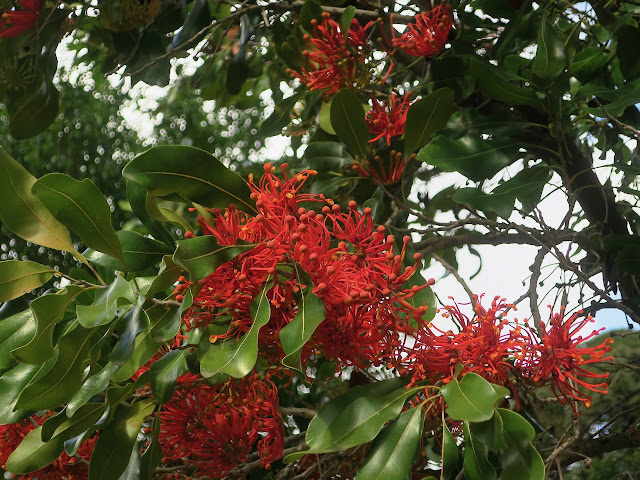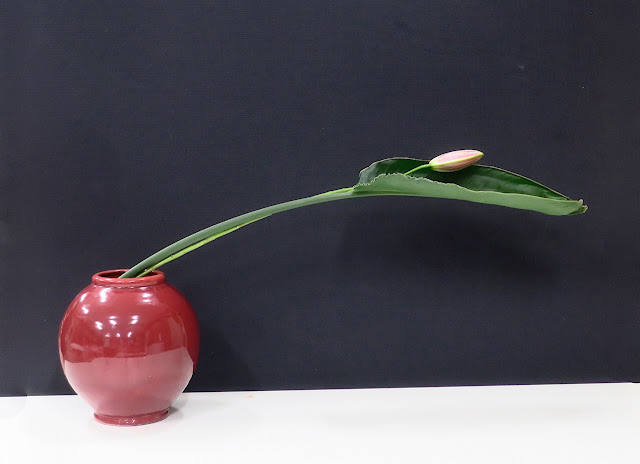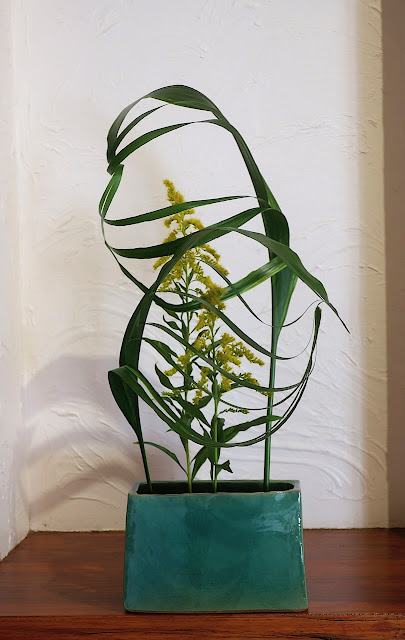A couple of weeks ago I set my Melbourne students the exercise of making a "Horizontal Ikebana". The materials chosen have a significant influence on the resulting ikebana. It is an interesting demonstration of the fact that Ikebana is a difficult art. The ikebanist discovers that plants cannot be made to do things against their natures. For the student, who has had a topic set for them, there is also the question of what materials are available at the time. I think some of the ikebana produced in the class should be thought of as "extending laterally".
Eugenia arranged variegated Aspidistra leaves, creating a strong sense of lateral movement reaching outward. A single dark pink Chrysanthemum sits in the space between the two main lines.
Marcia used two branches of Japanese Maple. The longest branch stretches to the left front while the shorter one provides a counter-balancing movement. White Japanese Windflowers Eriocapitella hupehensis form a light mass in the centre.
Jacqueline's ikebana slowly evolved during the class. Originally, the large leaves stretched to the right and the left. This is the final version where two leaves reach toward the right side, one nestling in the other. Two Haemanthus coccineus flowers provide a strong accent at the base of the leaves. A single wandering line extends to the left.
Marisha used two stems of Protea "Pink Ice" which had a natural gentle curve that sat well in her oval-shaped bowl. Both stems seem to be reaching outward. In the centre is a small mass of pale blue-grey Eucalyptus leaves.
* * * * *
Earlier this week I noticed that the Firewheel tree Stenocarpus sinuatus, was flowering in the Royal Botanic Gardens Melbourne.
This is a large tree. The flowers seem to form towards the end of the branches and are distributed throughout the canopy. Unfortunately the sun was behind a cloud so the red flowers do not look very bright.
Up close they are dramatic because of their intense red and the extraordinary spoked, circular form.
Meanwhile in the garden at Torquay...
...the third flower of the Kamo Hon'ami * Camellia opened yesterday. The plant has many buds this year, in spite of being quite small. It is surviving in a pot, having struggled through the summer of 2022-23. I took this photograph today in the late afternoon.
A couple of days ago I picked the second flower as it was on a short stem with only one other bud.
This is my modest, one-flower ikebana arranged with a small bare stem of Tea Tree Leptospermum laevigatum. The form of the flower lends it to a simple-looking ikebana that has a casual elegance, and which carries a strong feeling of quiet beauty.
The vessel is a ceramic lidded box by Don Jones that I bought in 1973. It has a Tenmoku glaze and a slightly domed lid.
Greetings from Christopher
21st April 2024
* This Camellia was named for the Grandson of the famous tea master Sen no Rikyu.
p. 108, Sparnon and Waterhouse. The Magic of Camellias. Ure Smith 1968































.jpeg)
.jpeg)






.jpeg)










.jpeg)
.jpeg)
.jpeg)
.jpeg)
.jpeg)
.jpeg)
